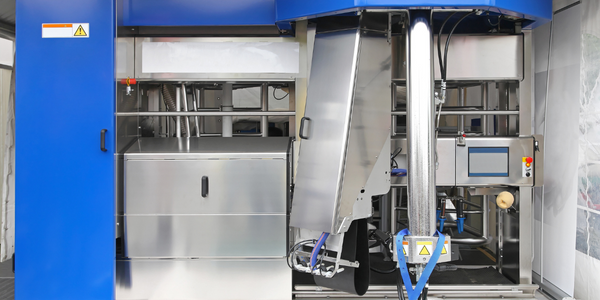Customer Company Size
Mid-size Company
Region
- Europe
Country
- Germany
Product
- DocuWare
- ABBYY FlexiCapture 8.0 Professional
Tech Stack
- HP servers
- 5 Terabyte storage solution
- Citrix terminal connection
Implementation Scale
- Enterprise-wide Deployment
Impact Metrics
- Productivity Improvements
- Cost Savings
Technology Category
- Application Infrastructure & Middleware - Data Exchange & Integration
- Analytics & Modeling - Process Analytics
Applicable Functions
- Business Operation
- Procurement
Use Cases
- Process Control & Optimization
- Inventory Management
Services
- System Integration
- Data Science Services
About The Customer
Prophete GmbH & Co. KG is a leading two-wheel manufacturer and wholesaler based in Rheda-Wiedenbrueck, Germany. The company was founded in 1908 and has grown from a small bike repair shop into a specialist in its field. Prophete attributes its success to several factors, including excellent service and exemplary logistics. The company has an extensive data center with a combination of HP servers and a strong 5 Terabyte storage solution. Over a broadband Citrix terminal connection, 220 employees access business software applications both in Rheda-Wiedenbrueck and also 200 km away in Oldenburg.
The Challenge
Prophete, a leading two-wheel manufacturer and wholesaler, needed to maintain a balance between customer demands for reasonable price, fast availability, and high quality of service. They realized the need for modern IT programs that could increase both the efficiency of business processes and the ability to communicate information to customers and sales partners. This led to the decision in 2006 to expand their IT department’s document repository by introducing a centralized document management system. The company required a central document repository with company-wide access, work-flow functionality, and integration with Navision and ABBYY FlexiCapture 8.0 Professional.
The Solution
Prophete chose DocuWare for its price-to-performance ratio, simple license agreement, intuitive user interface, and the possibility to connect a Navision ERP system and a workflow model. The implementation of the document management system was gradual, starting with a three-day workshop with DocuWare to define the key aspects of the project. This was followed by a two-month pilot phase to clearly define and adjust all data structures and fields. The second phase involved the implementation of a workflow system to transfer Prophete’s business processes into an exact electronic copy. The company also used ABBYY's FlexiCapture 8.0 to automate the processing of different incoming documents.
Operational Impact
Quantitative Benefit

Case Study missing?
Start adding your own!
Register with your work email and create a new case study profile for your business.
Related Case Studies.

Case Study
System 800xA at Indian Cement Plants
Chettinad Cement recognized that further efficiencies could be achieved in its cement manufacturing process. It looked to investing in comprehensive operational and control technologies to manage and derive productivity and energy efficiency gains from the assets on Line 2, their second plant in India.

Case Study
Airbus Soars with Wearable Technology
Building an Airbus aircraft involves complex manufacturing processes consisting of thousands of moving parts. Speed and accuracy are critical to business and competitive advantage. Improvements in both would have high impact on Airbus’ bottom line. Airbus wanted to help operators reduce the complexity of assembling cabin seats and decrease the time required to complete this task.

Case Study
Hospital Inventory Management
The hospital supply chain team is responsible for ensuring that the right medical supplies are readily available to clinicians when and where needed, and to do so in the most efficient manner possible. However, many of the systems and processes in use at the cancer center for supply chain management were not best suited to support these goals. Barcoding technology, a commonly used method for inventory management of medical supplies, is labor intensive, time consuming, does not provide real-time visibility into inventory levels and can be prone to error. Consequently, the lack of accurate and real-time visibility into inventory levels across multiple supply rooms in multiple hospital facilities creates additional inefficiency in the system causing over-ordering, hoarding, and wasted supplies. Other sources of waste and cost were also identified as candidates for improvement. Existing systems and processes did not provide adequate security for high-cost inventory within the hospital, which was another driver of cost. A lack of visibility into expiration dates for supplies resulted in supplies being wasted due to past expiry dates. Storage of supplies was also a key consideration given the location of the cancer center’s facilities in a dense urban setting, where space is always at a premium. In order to address the challenges outlined above, the hospital sought a solution that would provide real-time inventory information with high levels of accuracy, reduce the level of manual effort required and enable data driven decision making to ensure that the right supplies were readily available to clinicians in the right location at the right time.










